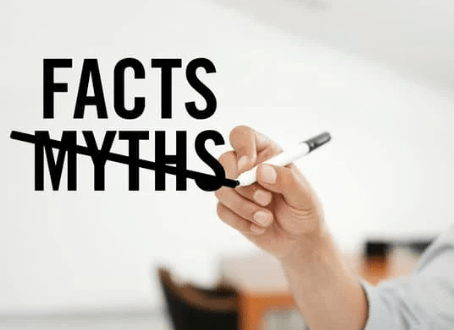Social Security Disability Myths BUSTED
– Matt Sauerwald, President, Disability Help Group
Matt Sauerwald is one of the nation’s top Disability Advocates. Matt has spent more than a decade helping people who are unable to work due to a disability, representing thousands of clients along the way. He knows people pursuing benefits hear a lot of misinformation and conflicting advice. So, he’s sharing the facts about some of the most common SSDI myths.
Top Disability Myths (and the Reality)
- Nobody gets approved the first time they apply for SSDI.
It’s true that many applications are denied in the first round–in fact, more initial applications are denied than are approved. However, each year, hundreds of thousands of SSDI applicants are approved in the first round. The important thing to keep in mind is that getting approved for SSDI isn’t like playing the lottery. Your chances of getting approved at the initial application stage depend on a few specific variables, such as the type of claim you’re making and the strength of your application. Working with an experienced advocate can help ensure that your application is as thorough and effective as possible.
- You can’t get Social Security disability benefits if you’re working.
This myth makes sense on the surface since SSDI is intended to provide income for workers who can no longer support themselves due to a disability. But, that doesn’t mean that you can’t have any earnings at all, either when you apply for Social Security disability benefits or while you’re receiving benefits. There are strict limits, though, so it’s important to get complete and accurate information about how earnings will impact your SSDI application and your right to continue collecting benefits.
- It’s impossible to get SSDI benefits as a young adult.
There’s a kernel of truth to this myth. The Social Security Administration (SSA) has different expectations for younger workers than older ones when it comes to being able to adapt and retrain if they can no longer perform the type of work they’ve always done. However, a younger worker who has sufficient work credits and is unable to engage in substantial gainful activity (SGA) can absolutely qualify for SSDe. At the end of 2022 there were nearly 1.2 million disabled workers under the age of 50 receiving Social Security disability benefits. More than 500,000 of those were under 40.
- Getting SSDI depends on whether your condition is listed in the Blue Book.
The Social Security Blue Book does contain an extensive listing of conditions that may qualify a person for benefits. But, simply having a listed condition isn’t enough–there are specific criteria that must be fulfilled for each. So, people whose conditions are listed in the Blue Book may not qualify. And, others may qualify with conditions that are not listed. The best way to find out whether or not you may be eligible for SSDI based on your medical condition is to speak with an experienced disability benefits advocate.
Matt and his team are here for you. To learn more about how we can help, call 800-800-3332 or click here.
Matthew Sauerwald has been a dedicated voice for the people seeking disability benefits since 2010. He has represented thousands of claimants fighting for benefits, and currently leads Disability Help Group, one of the most successful disability advocacy organizations in the United States.







